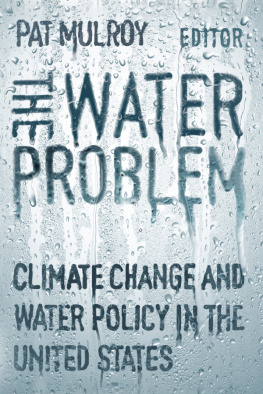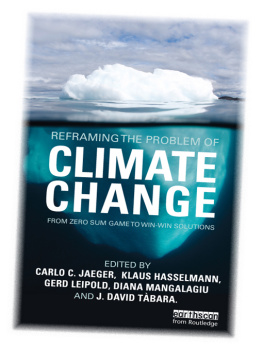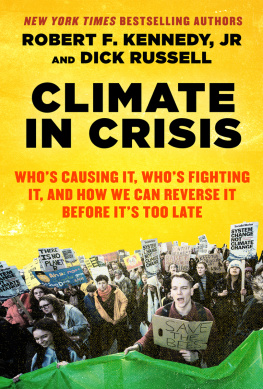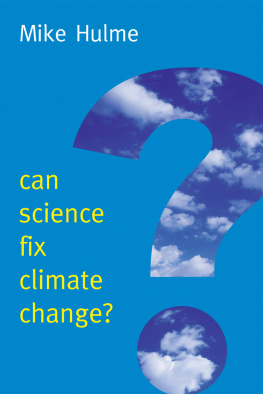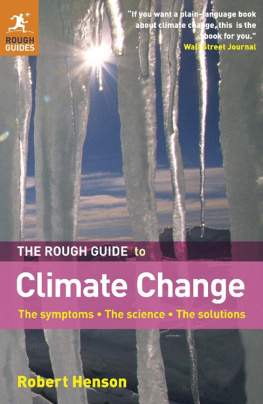First published by Earthscan in the UK and USA in 2011
For a full list of publications please contact:
Earthscan
2 Park Square, Milton Park, Abingdon, Oxon OX14 4RN
711 Third Avenue, New York, NY 10017
Earthscan is an imprint of the Taylor & Francis Group, an informa business
Copyright Robert Repetto 2011. Published by Taylor & Francis.
The moral right of the author has been asserted.
All rights reserved. No part of this publication may be reproduced, stored in a retrieval system, or transmitted, in any form or by any means, electronic, mechanical, photocopying, recording or otherwise, except as expressly permitted by law, without the prior, written permission of the publisher.
Notices
Practitioners and researchers must always rely on their own experience and knowledge in evaluating and using any information, methods, compounds, or experiments described herein. In using such information or methods they should be mindful of their own safety and the safety of others, including parties for whom they have a professional responsibility.
Product or corporate names may be trademarks or registered trademarks,and are used only for identification and explanation without intent to infringe.
ISBN 978-1-84971-214-9 (hbk)
Typeset by JS Typesetting Ltd, Porthcawl, Mid Glamorgan
Cover design by Rogue Four Design, www.roguefour.com
A catalogue record for this book is available from the British Library
Library of Congress Cataloging-in-Publication Data
Repetto, Robert C.
America's climate problem :the way forward / Robert Repetto.
p.cm.
Includes bibliographical references and index.
ISBN 978-1-84971-214-9 (hardback)
1. Energy policyEnvironmental aspects. 2. Renewable energy sources. 3. Petroleum industry and tradeGovernment policy. 4. Climatic changesGovernment policy. I. Title.
HD9502.A2R46 2010
363.738'745610973dc22
2010039472
Foreword
Timothy E. Wirth
T he central challenges of this century are the subject of this book. Simply put, our planet and its life support systems are at a tipping point. The trends are not sustainable.
In 1987 the World Commission on Environment and Development, chaired by Dr Gro Harlem Brundtland, defined sustainable development as prosperity and progress that meets the needs of present generations without compromising the ability of future generations to meet their own needs.
This timeless, universal statement of values perfectly captures the interdependence that characterizes the human experience today. People, problems and opportunities are connected as never before. Facing catastrophic climate change, as we do, it matters little whether greenhouse gases emanate from Chicago or Shanghai we all get warm together.
The reality of this kind of interdependence is entirely new in human history. Never before have the fates and responsibilities of the world's people been as intertwined. Never before have we borne such heavy responsibilities toward our children and grandchildren.
Unhappily, we are not living up to those responsibilities. In fact, we are failing badly as stewards of the natural systems that make human life and planetary productivity possible.
Clear scientific evidence, accumulating daily, indicates that the economic, environmental and security costs of climate change will dwarf even the profound global effects of recent economic turmoil. But even as we better understand the science, our emissions are growing faster than predicted, the concentrations in the atmosphere are getting denser, and the time horizon in which we can effectively act is getting shorter, even as the risks grow larger.
It is dismaying, then, that my generation has been so utterly ineffective, so seemingly indifferent in the face of the established facts and the clear implications for the next generations. The world's future is being mortgaged away because we refuse to acknowledge how much our long term economic and national security is linked to the health of the planet's life support systems.
I have long believed that the fundamental obstacle to the pursuit of sustainable development in the US and around the world is the misguided belief that protecting the environment is somehow antithetical to economic interests. Too many of today's leaders will say: I'm for protecting the environment as long as it doesn't cost jobs or hurt the economy.
It is within this terribly mistaken analysis that we encounter the fundamental intellectual challenge to sustainable development. Over the long term, living off our ecological capital is a bankrupt economic strategy.
Stated in the jargon of the business world, the economy is a wholly owned subsidiary of the environment. Virtually all economic activity is dependent in some way on the environment and its underlying resource base everything from food and fuel to water and fibre. These are the foundations of the vast majority of all economic activity and most jobs. When the environment is finally forced to file for bankruptcy because its resource base has been polluted, degraded and irretrievably compromised, then the economy goes down with it.
At the dawn of the 21st century, we find ourselves at a pivotal moment in the history of the world one that requires the same kind of innovation, engagement and political will that our country has historically demonstrated to transform the global energy economy.
This challenge of sustainability begins at home. To stabilize the atmosphere, we have to reduce our carbon output by at least 90 per cent by 2050. Each of us in the US is responsible for about 20 tons of carbon emissions per year, and most of it stays in the atmosphere for 100 years or longer. Instead of 20 tons, we will have to reduce our carbon emissions to about 2 tons per person. As a nation, we need to show what it means to transition to a clean energy economy and develop enlightened land use policies. We can set the standard for others to follow.
There are two relatively easy opportunities to accelerate this transition. First, a large scale effort to raise energy efficiency better understood as energy productivity can pay big economic dividends and deliver environmental and security benefits while reducing energy demand growth by half. Second, greater use of natural gas, which has only half the carbon content of coal and is much more abundant domestically than previously thought, is a low cost way to reduce power plant emissions. Just running existing gas-fired plants longer, and inefficient old coal-fired plants less often, can reduce emissions substantially. Replacing those obsolete coal plants with high efficiency, gas-fired, combined-cycle plants will provide a market for the abundant shale gas deposits found in many parts of the country.
The most practical and efficient policy approach to cut back carbon emissions across the entire economy is through market mechanisms, such as a cap and trade system, like those that have proven to be cost-effective in controlling other air pollutants. Putting a price on carbon will provide powerful incentives for investment in renewable energy, for improved efficiency and for bringing other low carbon options to market. We also need energy efficiency standards, reform of utility regulation and strategic infrastructure investments.




